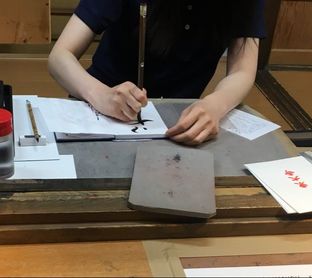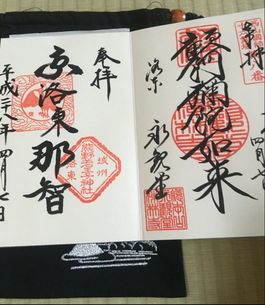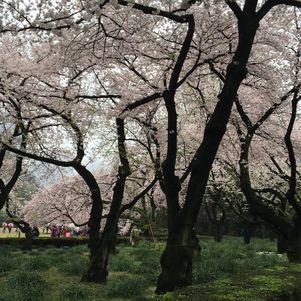|
Japan is a country that sees all four seasons. You can experience pieces of each season depending on what region you visit. However, Japan is not always an ideal situation depending on the time of the year. There are a few dates to keep in mind to avoid large crowds, busy train stations, and expensive prices. Golden Week: Last Week of April and the first week of May Golden Week is a time in Japan that the working population gets off for vacation. It begins with a national holiday and extends for about two weeks. Unless you live and work in Japan, you should avoid traveling to the country during this time frame. It can be very challenging finding train tickets, flights, and lodging along with increased prices. School Summer Vacation: Last Week of July to the End of August The end of the spring semester is not an ideal time to travel to Japan. When schools let out in mid-July, many Japanese families take vacations. This time frame also includes the week of the Obon Festival; another busy time for local travel. The last week of July through at least the fourth week of August are not good times to visit. Japanese New Year: The Week of January 1st The Japanese New Year is an important holiday in Japan. Many businesses close after New Year's Eve for a period of time. The country gets busy with local travel visiting friends and family around the holiday. Exceptions to the Rule If you are planning to climb Mt. Fuji, you will have to travel over the summer. Try to plan your hike during the week to avoid crowds on the weekend. Plan and make reservations well in advance; especially, lodging and transportation to the base area. Some people may want to visit over a holiday for a multitude of reasons. Ensure that the activities and sites you want to do are going to be open. Check if reservations are required for any activity and book Shinkansen seats early. Fuji Subaru Line 5th Station
A popular spot to start from when hiking the Yoshida Trail to the summit of Mt. Fuji. Hello everyone and thank you for visiting my website and blog. I hope you have enjoyed the content and posts thus far. I wanted to take a moment and share a little about myself and the reason for this website's existence. My strong interest and passion started over a decade go due to friends introducing me to Japanese art and culture. At that time, the only way to indulge in anything Japanese was to either watch a couple of dubbed television shows on Toonami, attend a convention, or actually visit Japan. I was always envious of friends that did exchange programs to Japan and knew one day I would visit too. Through my time in high school and college, I indulged in Japanese history, cultural articles, watched anime shows, and went to a number of conventions. I also volunteered for a few Japanese culture related events. After graduating college with a business degree, I started a full-time job in retail management and had my first real opportunity to save for vacations. Seven years later, I finally got serious about visiting Japan. Life happens fast and unless you prioritize what is important, time will pass you by. I set a time frame for when I wanted to go and began saving toward the trip. At six months out I booked a flight, lodging arrangements, and starting planning the details. After a year of saving and over 60 hours of planning, I was ready to take a solo adventure to Japan in April 2016. I loved every minute of the ten day trip and explored Tokyo, Kyoto, Hiroshima, and Miyajima Island. Some of the most amazing things about Japan can only be experienced in person. Japan is a very safe place to travel alone as long as you having an understanding of the culture, acknowledge the language barrier, and follow safety protocol. I learned so much planning and visiting the country. In June 2017, I was able to visit again with my fiance and her mother. We had an excellent time and I got see more of Japan with minimal overlap from the first trip. I also planned the bulk of my second trip, but it is important to plan less when traveling with others. I decided after the trip to share my knowledge and passion for Japan with others. My goal for this website is to share interesting and helpful information for others to enjoy and ultimately plan a trip of their own. I currently work full-time and attend part-time MBA school. My time is limited with class twice a week on top of my daily job, but I make a priority to post fascinating topics with relevant information. If you have any questions or comments, feel free to send a message through the Get in Touch page.
Thanks again for visiting and I appreciate your continued support, Landon One of the reasons to visit Japan is to tour some of their unique temples and shrines scattered across the country. You may have heard of a few such as Fushimi Inari-taisha shrine made famous by the movie, "Memoirs of a Geisha". Kyoto, Nara, and other old cities of Japan are well known destinations for visiting some of the most amazing temples and shrines. A way to commemorate your trip to such places is by purchasing a goshuinchou. How to Acquire a Goshuinchou A goshuinchou is a hardcover notebook that folds out with pages for collecting temple and shrine stamps. They can be purchased from many temples and shrines between ¥1000 and ¥2000 ($10 to $20) depending on design and ornateness of the book. Many places sell standard style notebooks along with special ones unique to the temple or shrine. Some places offer accessories for the notebooks such as a pouch available at Kinkaku-ji in Kyoto, Japan. Collecting Temple and Shrine Stamps Once you acquire a goshuinchou book, you can collect stamps from most of the temples and shrines that allow visitors. For around ¥300 to ¥500 ($3 to $5), a calligrapher will write the stamp in your book. Stamps represent the place's name, date of visit, and a prayer. They can be quite distinct from one place to another. It is very interesting to watch someone create the stamp. You may have to wait or retrieve your book at the end of a tour if the place is busy. Other times, places will give you a stamp sheet to include in your goshuinchou instead of actually writing in it. A Keepsake to Remember The best part about having a goshuinchou is to have a keepsake and memory of your travels across Japan to some of the most amazing sites. It is also a great talking piece to show guests and family when sharing stories of your trip. In addition, you can bring it back for future trips and collect stamps at other temples and shrines. Nanzen-ji Temple in Kyoto, Japan One of the most beautiful times to travel around Japan is during the spring cherry blossom season. In Japan, cherry blossom trees are called Sakura. The short-lived blossoming season typically falls between the end of March thru April. If you are heading to northern Japan, you may see blossoms during late April and into May. Some of the best sightseeing locations become quite crowded with people wanting to see a magnificent view. When Exactly Do the Trees Bloom? The trees can bloom any time over a span of a few weeks. The weather of each region in Japan will dictate whether the trees bloom earlier, later, or at an expected time. The blossoms are only visible for about a week. The blooming peaks at different times across the country. There are some great resources online that can help track and predict the best time to see cherry blossoms. Japan Guide has a table with average dates by city and will maintain a forecast leading up to and thru the season. When Should I Go to See Cherry Blossoms? While you can see trees blooming all across Japan, one of the most popular (and expensive) places is Kyoto. Room rates in Kyoto greatly increase around the cherry blossom season. There is definitely something magical about seeing the blossoms around temples, parks, and scenic backdrops. Without spending a ton of money on lodging, Tokyo offers great opportunities as well. Shinjuku Gyoen and Ueno Park are spectacular places to see the blossoms. Sumida Park along the Sumida River is another good option. How can I Guarantee that I Will See the Cherry Blossoms When Visiting Japan? There is not way to guarantee when the trees will bloom. The average dates table is a good place to start. Another tip is to try and plan your stay over a two week period around the beginning of April. Visiting different cities across Japan during that time frame will help increase the likelihood of seeing trees in bloom. Other Tips If you are planning to visit Kyoto during cherry blossom season, book early. Room rates are extremely expensive and fill fast in the more popular parts of town. In addition, book restaurant reservations early as the city is very crowded with tourists. Rain will cause blossoms to fall off trees faster and decrease the days of full bloom. Bring an umbrella (or purchase one) to not miss opportunities on seeing cherry blossoms. Shinjuku Gyoen National Garden in Tokyo
|
Follow me
on Instagram @card_knock_life Categories
All
Archives
July 2024
This website contains affiliate links
|











 RSS Feed
RSS Feed
